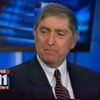Under Armour just announced earnings that were better than expected. This caused their stock to jump 15.49% at the closing bell on Thursday. According to the company, earnings and sales are up from a variety of factors -- not the least of which is the popularity of its Steph Curry signature basketball shoe line.
A page out of Nike's playbook
It appears that UA is copying Nike's tried and true marketing strategy of focusing on the hero athlete. In addition to Curry, who was the NBA's MVP last year, UA has signed Super-Bowl bound Carolina Panther quarterback Cam Newton and Jordan Spieth, winner of two of the biggest golf tournaments in 2015 including the Masters.
Nike's big branding weapons
The two biggest weapons in Nike's branding arsenal are (1) the Nike Swoosh logo and (2) its emphasis on hero athletes such as basketball legend Michael Jordan. It is this second strategy that UA has been copying.
Nike is still the king of promotion leverage
While any sports shoe and apparel manufacturer can sign star athletes, Under Armour and Nike's other rivals have yet to master its use of the news media for promotional leverage. Nike pioneered this strategy during the 1984 Olympics.
Converse became the official shoe sponsor of the 1984 Olympics in Los Angeles. They paid a $4 million dollars for the privilege, and upwards of $6 million more on additional promotional costs. Nike outsmarted Converse by spending much less to create a commercial showing songwriter Randy Newman driving around Los Angeles singing his hit song "I Love LA" while well-known Olympic athletes Mary Decker Slaney and Carl Lewis ran and jumped wearing Nike gear. The video commercial aired before and during the Olympics. However, the paid spots were dwarfed by the free news coverage of the video in Los Angeles and around the world. News stations played the video over and over, and the song became the unofficial theme song of the Olympics with Nike benefitting with every free brand impression. The result? By spending much less to create a commercial that became its own news story, Nike gave most people the impression it was the official shoe sponsor of the Olympics.
Under Armour has yet to match Nike's skill in leveraging news
Since the 1984 Olympics, Nike has used just about every opportunity to leverage their promotional investments with news coverage.
In 1985, when the NBA banned the Air Jordan 1 basketball shoes for violation of its rules on shoe color, the NBA fined Michael Jordan $5,000 per game for wearing them. Nike gladly paid the fines since every fine created more "buzz" and new stories about Nike and Air Jordan shoes. Nike received a major assist from Jordan's performance on the court. He was named to the All Star team, voted Rookie of the Year, and helped to bring the Chicago Bulls to the playoffs after a four-year absence.
In 2010, when the news media was focusing their attention on the Tiger Woods cheating scandal, Nike made a commercial with Tiger Woods that became its own news story and capitalized on the widespread interest in the scandal.
Swoosh logo is everywhere generating more free impressions
The power of Nike's marketing is not limited to leveraging big news stories. It appears every day in the sports sections of newspapers, blogs, and TV coverage of sporting events as the Nike Swoosh is prominently displayed on uniforms and sports gear. The location of the swoosh for maximum exposure enables the brand to be continuously etched into the brains of anyone that witnesses the events or sees the replays and news coverage. The more that people see the logo associated with successful athletes, such as Michael Jordan, the more comfortable they are buying the products that use the same brand identifiers.
From validation to desirability and beyond
In addition to being a graphic representation of the brand that gets quickly implanted in buyer brains, the swoosh becomes a brand validator that gives status and recognition to the buyer. It's a short-cut to purchase that overcomes even price barriers of $180, $349 or even prices well over $1,000 for one pair of athletic shoes. For the target audience, the Nike brand gives the product desirability. When people line up to buy the latest models the lines and news stories about the lines take the desirability to an even higher level where people not only want the product, they have to have it for status, bragging rights, or their own self identity.
Under Armour is becoming a viable competitor
With the success of its Steph Curry signature basketball line and its signing of Jordan Spieth and Cam Newton, Under Armour is nipping at Nike's heels. It's $3.1 billion in sales, however, is just over 10% of Nike's $30.1 billion. And at 40%, Nike still has a dominant market share -- twice the % typically needed to insure profitability. Most importantly, Nike has a marketing machine that has left rivals such as Adidas, Reebok, and Converse (now part of Nike) in the dust. As a result, Under Armour has quite a ways to go to challenge Nike's dominance. Even so, because of UA's success to date, Nike decision makers need to take their latest challenger seriously and sign some new young "hero athletes" before UA can snatch them from under the Swoosh.
